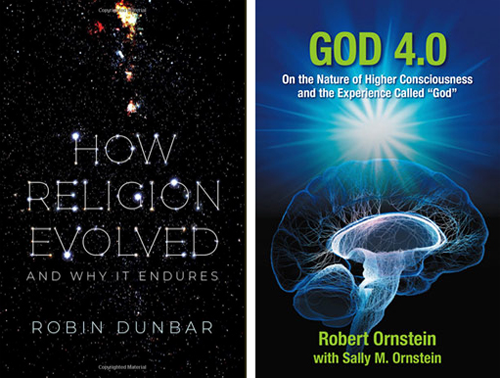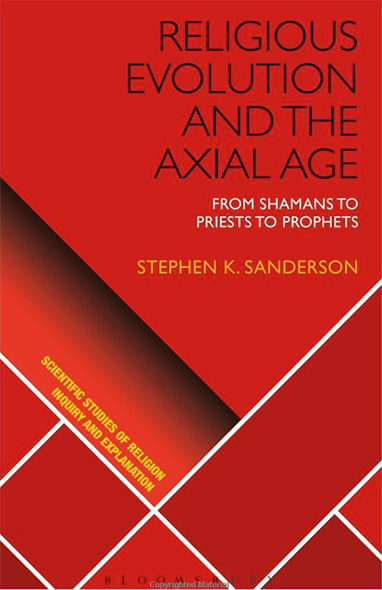
Book Report
Sacred Nature
Restoring Our Ancient Bond with the Natural World
Karen Armstrong
(2022)
Report by Farooq Chadhry
As I sit down to write this, approximately one third of Pakistan is underwater due to devastating floods from monsoon rains. Before going on, I must ask you, reader, to sit for a moment and try to ponder what it means for a third of a country to be underwater. Over 1,300 people are dead (and the number is likely to climb). Livelihoods, crops, and homes have been destroyed. Food and medicine are difficult to access. Recovery will take months, maybe longer, if ever—but what does recovery even mean when life as one knows it can be swept away by unstoppable currents of water that materialize in a matter of days?
A staggering 33 million people have been internally displaced in Pakistan. Because climate change is likely to have played a role in the heavy rains, the displaced can be considered “climate refugees”—a term that the novelist Fatima Bhutto urges us remember, as we will all be impacted by climate change, and many of us will become migrants as a result, if we haven’t already.
Much has been written about developed countries’ outsized impact on climate change through their unrelenting burning of fossil fuels, and the disproportionate consequences that poorer countries, like Pakistan, which accounts for less than one percent of global carbon emissions, will face as a result. But in Sacred Nature: Restoring our Ancient Bond with the Natural World, Karen Armstrong, a prolific author of numerous books on religion, shifts our focus on the causes of climate change from the material to the spiritual.
Armstrong locates our very capacity to willingly inflict so much violence on the natural world in the severed link between nature and the divine, which developed in early modern European Christianity. While the medieval Catholic theologian Thomas Aquinas asserted that God is not just a being but Being itself, “present everywhere in everything,” not just confined to a supernatural heaven above, later theologians and philosophers began to understand the divine in strictly rationalist terms. Francis Bacon argued that humans can discover the laws governing the natural world, giving humanity not just the opportunity but the obligation to control and subdue the earth; Rene Descartes believed matter was lifeless, godless and inert, and thus nature could not tell us anything about the divine; and Isaac Newton defined God’s essential characteristic as dominatio (“dominion”), a concept which would reduce nature to a resource to be exploited. By Armstrong’s account, Newton believed God was simply a larger and more powerful version of a human scientist, what Newton described as “a voluntary Agent” who was “very well skilled in Mechanicks and Geometry.” Decoupling the natural world from the divine reduced it to phenomenon to be controlled and exploited and removed the spiritual safeguards that otherwise could have prevented the destruction of the environment.
This evolution was not only a break from earlier Christian theology, Armstrong writes, but is an anomaly among other major world religions. Confucianism and Daoism, Islam, Hinduism, and other religions all still hold nature to be sacred. It is from this essential premise that Armstrong builds upon through the rest of the book, surveying other religious traditions to explore how humankind has understood the relationship between nature and divinity, to provide a way forward to mend our broken relationship.
In Confucian thought, qi is the ineffable essence of the universe, neither wholly spiritual nor wholly material, that pervades all life, “harmoniously linking the plant, animal, human and divine worlds and enabling them to fulfill their potential.” The Confucian scholar Tu Weiming described this continuous relationship between heaven, earth, and humanity as “anthropocosmic,” collapsing the divisions between human beings and the divine as the two share the same reality. In Islamic thought, nature itself is not divine, but one of God’s greatest signs. Each verse of the Qur’an is called an ayah—a sign of God—and so too is each phenomenon of nature. So not only is the Qur’an a divine revelation, but the rhythms and pulses of the natural world itself are a constant theophany to be pondered and immersed in, just as one would with scripture.
But simply reading the doctrines and ideas of other faiths is not sufficient, Armstrong argues. One must also expand the ways in which we come to know things in the first place. There are two main ways of acquiring knowledge about the world: logos and mythos. Logos corresponds to objective facts and is the pragmatic, rational mode of thought that powers our decision making and allows us to function. As successful as logos has been in producing scientific advancements for the benefit of humankind, it cannot answer questions pertaining to the meaning or purpose of life, or the nature of beauty. Mythos, on the other hand, begins at the limitations of logos, venturing inward into the deepest facets of the human experience, concerning itself with meaning and value. Mythos cannot be conveyed by rational proof, but its insights are intuitively felt and known, like the impact of reading a tender poem. This is not to say that mythos is irrational, but that it extends beyond the limits of rationality and opens the door to knowledge that rational proofs cannot perceive; it is the type of insight Ralph Waldo Emerson was speaking from when he proclaimed “beauty is the mark God sets upon virtue.”
This mythical knowledge is only unearthed when cultivated and embodied in ritual and practice, and ritual plays a central role in the religions Armstrong analyzes. The idea of ahimsa, translated as “harmlessness,” is crucial to social and spiritual life in many Indian religious practices, but particularly in Jainism. In order to reach spiritual liberation, Jains taught, one must cultivate empathy with every living being through a program of asceticism in which their bodily actions reshaped their minds: the spiritual aspirant had to walk with extreme caution, lest they accidentally step on an insect or plant; one could not pluck fruit from trees, but had to wait for fruit to fall on its own; and twice a day should stand before one’s teacher and repent for any unintentional harm they may have caused. In Hinduism, priests devised what is now known as the Five Great Sacrifices. To help the faithful develop habitual attitudes of compassion, gratitude, and practical concern for others and the natural world, the Five Great Sacrifices call for placing a small bowl of food outside for hungry or sick animals, welcoming and honoring both invited and uninvited guests, remembering both the deceased and Hindu deities with offering of rice, grains or fruit thrown into the family’s fire, and performing a daily study of scripture. Each chapter of Armstrong’s book concludes with a brief section of suggestions on how to incorporate these teachings in one’s own life, whether or not one embraces the religious traditions they are derived from.
It is insufficient to view the collapse of the environment as a purely physical phenomenon— we must look at the spirituality, or lack thereof, that produced human beings capable of such pillaging. If we fail to do so, we remain vulnerable to the same destructive tendencies that created our circumstances in the first place. Through Armstrong’s exploration, it becomes clear that a cohesive theology of oneness, harmony, and reverence for the natural world is central to humanity’s collective religious expression. And from this theological wellspring emerged rituals and ethics for how to engage with and be in the world. It would be a mistake to adopt a passive spirituality confined to contemplating nature without acting to restore and preserve it. And a theology of oneness naturally encompasses how we interact with humanity at large, too. So, taking nature as our guide, it is just as essential for our dealings with each other to be perfumed with reverence and dignity, and to commit ourselves to undoing and repairing the injustices that humankind inflicts on its own members. This is, according to our spiritual traditions, what the natural world not only teaches us, but demands of us. Armstrong’s book makes a vital contribution to discussions on climate change because what is required from us as a species is not only a technological transformation, but also a spiritual one.
This article was first published by Chicago Review of Books.

A Contemporary Look at the Nature of Religious Experience
Review by George Kasabov
Contributing Writer
People can persuade themselves of anything. Many believe that death is a transition to a transcendental world, that miracles occur through the will of God, or that our lives are ruled by immaterial spirits. How is it that, in our scientific age, when we have learned so much about the evolution of the universe and the nature of life, so many still cling to such beliefs? Why is it that faith – belief in the unprovable – is considered a virtue?

Religious Evolution and the Axial Age
From Shamans to Priests to Prophets
Hardcover edition 2018
Reported by Sally Mallam
Contributing Writer
Why are there are so many different types of religion and how and why has religion evolved over time? The answer lies in both our biological and our sociocultural evolution.
